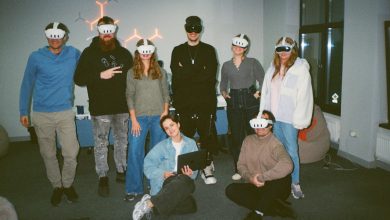
We’re in the midst of what many call the AI revolution. Enterprise tech giants scramble to outspend competitors and expand their artificial (or, as I’ll argue, augmented) intelligence capabilities, VC firms are continually pouring more and more dollars into new AI/ML initiatives, and startups are forming every minute.
At super{set}, we build AI-native companies and we’ve been doing it for years. So when the new wave of LLMs launched (ChatGPT, Claude, Gemini, etc.), we understood their power. Their capabilities and limitless possibilities in creating new solutions fundamentally shift the way we release and consume software. With our rich talent, know-how, and emerging tech, we have an exciting opportunity and enhanced abilities to solve real business problems. Instead of relying on artificial intelligence, we’ve augmented our own.
Boots on the Ground
For individual developers, agentic AI transforms what work looks like. With tools like Cursor or GitHub Copilot, each engineer now effectively acts as a complete dev team, including ops. Agents execute tasks in the background, spin up boilerplate code in seconds, manage up to one million tokens of context (approximately 30-40k lines of code), and build features on demand. Better yet (as they have no thoughts, feelings, or souls), agents have no qualms about slogging through monotonous work. They provide extensive documentation for every request, rapidly build tests to accompany new features, and expedite tasks including reviews of legacy code.
While AI’s ability to generate code and content gets the most attention, some changes brought on by agentic tools eliminate “softer” problems, which can be just as compelling. When agents expand a developer’s scope, they eliminate swaths of time spent waiting for responses or creating tickets. That’s not to say that engineers are siloed away and only talk to their screens. Instead, they now collaborate more effectively, devoting meeting time to high-impact issues rather than basic back-and-forth communication.
Even with their skills laying foundations and building features, models struggle to architect solutions, handle edge cases, or think creatively (as Jim Grey points out in his blog post on driving AI adoption). These blind spots are precisely where human engineers can innovate and shine. When agents strip away the ugly and boring, humans now spend more time on issues with big-picture implications.
Another critical consideration is potential gains from skilled AI usage. As product teams become more familiar with still novel tools, they ask better questions, craft better prompts, and build even better. We may still not understand just how transformative agentic coding tools can be, but it is essential not to let that stop us from getting closer to the upward limit.
AI-Native Education
At super{set}, one of the key differentiators we look for in early-stage companies is an AI-Native design. We want to work with teams and products that place AI at the core of the business, not those that treat it as an add-on or bonus. Today’s college students are in a similar position; they understand and embrace the capabilities of emerging tools. It’s not surprising, then, when students build skills that include technology usage, rather than treating it as something to pick up later when they’re active in the workforce.
Students are also uniquely positioned in the technological landscape. They have access to the same tools as seasoned operators, but lack the fundamental real life experience of an industry vet (or even a younger dev).
These simultaneous truths set up two potential pitfalls:
- Students may overutilize AI in school and fail to develop deeper technical skills, such as witnessing a full software development lifecycle for real-world users, at scale.
Or
- They may underutilize AI, setting themselves up to be unprepared for modern technology that drives today’s workforce.
Both scenarios have potentially negative consequences. As students transition to employees, founders, and pros, those without deep technical skills will soon realize that real-world problems are far more complex than homework assignments. At the same time, young people who don’t know how to use modern technology will be dramatically outpaced by those around them.
The solution? Embrace the ways technology can drive learning without giving up the reasoning process. Young people are naturally receptive to new tech. Not having spent time optimizing old systems, there’s no hesitance to give up on work already done, and not feeling their skills or established positions threatened (yet), they have less reason to push advancements away. But students need to understand how they are solving problems, or they risk artificializing their intelligence. However, without the ability to use tools to augment their talent, they simply won’t be effective.
For universities to justify their steadily growing price tags, they need to equip students with these skills. As it stands, many schools are too quick to shun AI in the classroom. In many cases, they leave students to set usage policies or offer vague restrictions and regulations. Neither of these is effective. AI isn’t coming, it’s already here. Until colleges can build such tools and practices into learning, they fall short of guiding AI-native development, doing their students a disservice.
Where Are We Going Next?
One of the most exciting aspects of AI is how quickly the tools are improving. Models are becoming more advanced, new AI/ML software companies are launching at a faster clip than ever before, and people are gaining more expertise every day. We’re already seeing massive boosts in productivity. The age of augmented intelligence is here and people are starting to ask what the future holds for software developers.
When we look forward, we aren’t worried. We’re excited – Our team brings the battle-tested experience gained over decades of building and scaling. The most successful AI practitioners in the software development field have a deep knowledge of structure and architecting (still a struggle for LLMs), and excel at creating organized, readable, and scalable solutions. All of those skills are still important, and with AI streamlining more procedural tasks, they may be more valuable than ever.
It’s a dynamic that societies have had to negotiate again and again through history. Mobile phones eclipsed landlines. The PC rendered typewriters obsolete. The automobile replaced horses. And despite what some tech industry types may think–insensitive remarks from British Telecom’s tech leader comparing employees to horses being example #1–the AI revolution doesn’t need to be, and likely won’t be, a mass unemployment phenomenon. The problem with the horse analogy is that it locates the workforce in the wrong place. Today’s workers who feel threatened by AI advancements aren’t the horse; they are much more like the person whose job it was to care for the horse. The good news? Many people who used to care for horses found work driving or maintaining automobiles. Their old roles and skill sets lost value, but those who adapted to new technologies ended up ok.
While this example isn’t perfectly analogous, the core issue is similar. When scientific progress encroaches on existing qualifications, those who embrace change and enhance their abilities to keep pace with it dramatically outperform those who stand pat. The AI wave is already breaking. People who rise above and catch that wave will thrive; those who don’t better learn to swim.
_______
About the Authors




